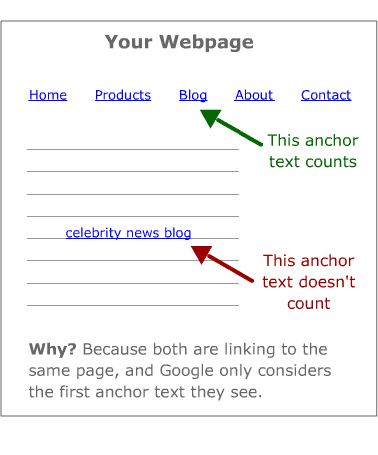How to Optimize Your Blog Posts for SEO: an Easy-Peasy Guide

Great SEO isn’t really a standalone practice anymore. In fact, it’s really difficult to seperate search engine optimization from social media and content marketing, because these three factors form the pillar of a modern inbound marketing strategy. Keyword research and optimization can improve the performance of your SEO blog posts in search, while social media shares send a clear message to Google that your content is quality. You won’t get far without the putting effort into all three legs of the contemporary marketing triad!
To learn more about how SEO has changed, we recommending diving into SEO is Dead.
Content Marketing = Guaranteed SEO.
As brands increasingly turn to content marketing, the volume of content available on the internet continues to expand drastically. More than 2 million blog posts are published each day! Even if you’re following Google’s quality guidelines to the letter, taking the time to optimize SEO blog posts can ensure your content gets the attention it deserves from both search engines and your prospects. Here is a super-simple, step-by-step guide to modern SEO blog posts optimization best practices:
1. Do Your Keyword Research
Trying to insert keywords into a blog that’s already been written is like trying to add sugar to a cake that’s finished baking. It’s not going to have the same level of cohesion it would if you’d added it while you were mixing the batter. Researching the right terms to use for your SEO blog posts can allow you to determine the topics and concepts that are driving the highest volume of search in your industry, and help you shape your editorial calendar accordingly.
To learn more about how to get started, check out Best Keyword Research Tools.
2. Create an Editorial Calendar
There are legions of content marketers who live in fear of creating an editorial calendar. Never fear- they’re really not that time-consuming to create or maintain. Not only will your professional organization skills soar, they’re an important tool for creating SEO blog posts. You don’t need to create your titles in advance – and some inbound marketers believe headlines should be created last – but create topics around your keywords for the month. Gather resources, and consider which call-to-actions you’ll include with your articles. Some experts believe you should include both primary and secondary keywords in your calendar for the most SEO optimization benefit possible.
To get organized, look into The 15 Most Life-Changing Editorial Calendar Tools.
3. Create SEO-Friendly Copy
It’s impossible to discuss the idea of SEO blog posts without bringing Google’s quality guidelines. Create content that’s relevant to your keywords, but ensure it fits the following criteria above all else:
Write for people, not search bots: ensure your copy is natural and compelling.
Don’t be tricky: if your keyword is “content marketplace,” don’t try and cover conversion optimization.
Be Unique: Your content should have standalone value that your readers can’t get anywhere else on the web.
On-page content is just one factor in creating SEO blog posts, but it’s a pretty important one. Write well, incorporate your keywords, and make sure you’ve put in enough effort to create something remarkable.
4. Consider the Reader Experience
Formatting your content for clarity is definitely a content marketing best practice. As Samar Owais points out, “we all scan and skim online.” Use bullet points and numbered lists, add compelling images, and just say no to long sentences. Formatting your content into easily-digestible chunks actually serves a dual purpose, making your content easy-to-read and index!
The larger the text on the page, the greater the weight placed on it by Google, Bing or Yahoo. That’s a lot to digest, but remember that headlines matter more than subheaders, which matter more than text. Subheaders are an optimal place to use your primary and secondary keywords for an extra SEO boost!
5. Create a Really Wicked Headline
Whatever you do, don’t skip out on creating an epic and eye-catching title for your SEO blog posts. If you’re not convinced that headlines matter, consider the ubiquitous list website, Buzzfeed. Creating amazing titles is a huge component of their marketing strategy – and it really works! Incorporate your keyword, but be sure to pack a punch by using powerful or action-oriented words, numbers, questions or other factors that are sure to capture a reader’s eye on social media or in search.
Find more in 7 Steps to Creating Titles that Work.
In Blogger, WordPress, HubSpot and many other content management systems, your blog title will do dual duty as your page title. According to Moz, this is the single most-important factor in creating SEO blog posts. More than anything else, your title tag will communicate to Google what your blog is about.
6. Use Anchor Text
When uploading your blog for publication, don’t be shy about incorporating links to important pages on your website. An internal linking strategy won’t just provide your readers with an opportunity to explore more of your content, it will communicate to search engines which pages you consider important. As your individual pieces of content gain authority and links from external websites, the pages they point to will also gain better ranking.
Use your primary and secondary keywords to carry links within the body of your content, a concept known as anchor text. Be cautious, though – linking to the same page multiple times throughout the same blog isn’t a clever trick. Google actually only considers the anchor text of the first link on a given page:
7. Tag Sparingly
Sorry to break it to you, but tags aren’t as important of a factor for SEO blog posts as they used to be. In the early days of content marketing, loading your pages up with tons of tags worked, and it was a great way to rank for similar keywords. Now, you’re more likely to create a messy user experience and annoy your website visitors than impress search engines. Joost de Valk writes that tags only improve your SEO in that they can improve your crawl rate (the number of times visitors click through to another page), and help you group associated posts. Overtagging could even cause you to get pinged for duplicate content on your website! So tag away – but do itsparingly, with your primary consideration being whether it adds benefit to the reader.
8. Include Gorgeous Images
Everyone loves visual content! Humans process images 60,000 times faster than text. Adding images to your SEO blog posts can significantly improve the stickiness of your content, and lower your bounce rate. While the exact details of Google’s algorithm are top-secret, many SEO xperts believe that websites with a high bounce rate – defined as a visitor leaving without visiting a second page on the site – are heavily penalized. While some degree of bounce is normal, an incredibly high bounce rate can indicate low-quality content, deceptive titles, poor user experience, and any other number of ills to search engines.
To receive the full SEO boost possible from your images, save the file using your keyword as the file name. You’ll receive more benefit from an image called “content marketing services” than file-1090347. Be sure to include alt text to describe the images, too – Google uses these descriptive phrases to further determine the intent of your SEO blog posts. This is a crucial place to use your primary keyword.
9. Add Metadata
Meta descriptions are no longer directly considered by search engines in ranking pages, according to Moz. However, they’re a pretty important factor in creating SEO blog posts because these description tags are crucial for gaining click-throughs from search engine results pages:
10. Share Your Content
Once you’ve created optimized SEO blog posts, your work isn’t done. Sure, you can breathe a sigh of relief once you hit publish, but it’s now time to get to work sharing your content. Publish your work to your brand’s Facebook, Twitter, Google+, and Pinterest, and maintain an active presence on these networks to thank anyone who shares your article. Practicing great content promotion practices will allow you to fully leverage social signals to continue to improve your content’s ranking.
While the process of creating optimized SEO blog posts can seem overwhelming to beginners, once you’re in the mindset of creating content for search engines and readers, the steps become second nature. In fact, you’ll soon be on your way to optimizing pages in 15 minutes or less!
Courtesy – http://writtent.com/blog/optimize-blog-posts-seo-easy-peasy-guide/


